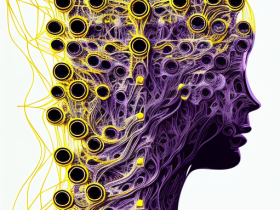In the ever-evolving landscape of machine learning and artificial intelligence, staying ahead of the curve is essential. One powerful toolkit that has garnered attention for its flexibility and ease of use is Chainer. This article delves into the world of Chainer, exploring its features, benefits, and how it can be harnessed to build advanced neural networks.
Introduction
Artificial intelligence and machine learning have witnessed phenomenal growth in recent years. To harness the power of these technologies, developers and researchers rely heavily on neural networks. Chainer, a dynamic neural network framework, offers a unique approach to building and training these networks.
What Is Chainer?
Chainer is an open-source deep learning framework written in Python. It is designed to be flexible, allowing developers to define complex neural networks dynamically. Unlike traditional static computation graphs, Chainer adopts a dynamic approach, which means that the network structure can be altered on-the-fly during training. This dynamic computation graph is one of Chainer’s defining features.
Why Choose Chainer?
Flexibility
Chainer’s dynamic computation graph allows for greater flexibility in network design. You can easily change the network architecture, add or remove layers, and experiment with different configurations during training. This flexibility makes Chainer an ideal choice for researchers and developers who need to adapt quickly to changing requirements.
Automatic Differentiation
Chainer provides automatic differentiation, a crucial feature for gradient-based optimization. It calculates gradients efficiently, simplifying the process of training complex models. This feature is particularly useful when working on tasks like deep reinforcement learning.
GPU Acceleration
Chainer offers seamless GPU acceleration, which significantly speeds up training times for large models. This is essential for tasks involving massive datasets and deep neural networks.
Getting Started with Chainer
Installing Chainer
Getting started with Chainer is straightforward. You can install it via pip:
pip install chainer
Basic Concepts
Before diving into complex applications, it’s essential to understand the fundamental concepts of Chainer. These include Variables, Functions, and Links, which serve as building blocks for creating neural networks.
Chainer’s Unique Features
Chainer stands out in the world of deep learning due to several unique features.
Dynamic Computation Graphs
Unlike static computation graphs in frameworks like TensorFlow, Chainer employs dynamic computation graphs. This means that the graph is built and modified as you go, making it easier to work with variable-length sequences or networks with changing structures.
Automatic Differentiation
Chainer’s automatic differentiation is a game-changer. It automatically computes gradients during backpropagation, reducing the complexity of implementing custom loss functions or training procedures.
GPU Acceleration
Chainer seamlessly supports GPU acceleration through CUDA, making it suitable for training deep networks on powerful hardware.
Chainer’s Ecosystem
Chainer has a thriving ecosystem with various libraries and extensions for specialized tasks.
ChainerCV
ChainerCV is a library for computer vision tasks. It provides pre-trained models and tools for tasks like image classification, object detection, and image generation.
ChainerRL
ChainerRL focuses on reinforcement learning. It offers a range of algorithms and utilities for training agents to perform tasks in various environments.
ChainerMN
ChainerMN is designed for distributed deep learning. It allows you to scale your training to multiple GPUs and machines, making it suitable for large-scale experiments.
Use Cases of Chainer
Chainer finds applications in a wide range of domains. Here are some notable use cases:
Image Classification
Chainer is frequently used for image classification tasks, achieving state-of-the-art results in competitions like ImageNet.
Natural Language Processing
In NLP, Chainer is employed for tasks such as text generation, sentiment analysis, and machine translation.
Reinforcement Learning
Chainer’s flexibility makes it a valuable tool for developing and training reinforcement learning agents, especially in complex scenarios.
Best Practices with Chainer
To make the most of Chainer, consider these best practices:
Model Design
Invest time in designing your neural network architecture. Experiment with different layers, activation functions, and optimization algorithms to achieve optimal performance.
Training and Optimization
Fine-tune your training process by adjusting learning rates, batch sizes, and data augmentation techniques. Monitor training progress and make adjustments as needed.
Chainer vs. Other Frameworks
While Chainer offers unique advantages, it’s essential to compare it with other popular deep learning frameworks like TensorFlow and PyTorch to choose the best tool for your specific task.
Community and Resources
Chainer has a vibrant community of developers and researchers. Join forums, attend conferences, and explore online resources to stay updated on the latest developments.
Future Prospects of Chainer
Chainer’s innovative approach to dynamic neural networks positions it as a contender in the rapidly evolving field of deep learning. As research continues, Chainer is likely to play a significant role in shaping the future of AI.
Conclusion
In the realm of neural networks and deep learning, Chainer stands out as a dynamic, flexible, and powerful toolkit. Its ability to adapt on-the-fly, coupled with features like automatic differentiation and GPU acceleration, make it a valuable choice for researchers and developers. By exploring Chainer’s ecosystem and best practices, you can harness its potential to tackle a wide range of AI challenges.










Leave a Reply